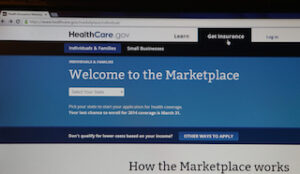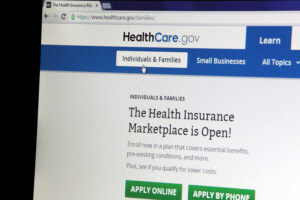According to projections from the Centers for Medicare and Medicaid Services (CMS), total healthcare expenditures in the United States have increased at an annual rate of 5.4% since 2019 and are expected to climb to $6.2 trillion by 2028.
A recent poll conducted by Gallup and West Health discovered that 94% of Americans think the cost of healthcare in the U.S. is simply too high. Based on a new analysis by IBISWorld, health and medical insurance is ranked fourth among the 10 most profitable industries in the U.S.
This being the case, it’s no wonder that tech giants like Amazon, Google, and Facebook have their eye on entering the $6 trillion healthcare market. With this hypothetical trend in mind, Breeze surveyed 1,500 adult consumers and found that 55% would buy insurance from Amazon compared to 46% from Google, and 38% from Facebook.
Stuart Long, CEO of InfoBionic, isn’t surprised by this prospect and proposes that “the healthcare industrial complex must acknowledge the legitimacy of public frustration regarding the high cost of healthcare and recognize that value-based care using telehealth and remote patient monitoring can be a source of relief.”
A March 2022 U.S. Census Bureau Household Pulse Survey concluded that 1 in 10 Americans are uninsured, which is down by 10.5% since 2020. However, the 2022 Commonwealth Fund Biennial Health Insurance Survey highlights that 43% of working-age adults have inadequate insurance coverage. Of that percentage, 9% were uninsured, 11% had a gap in coverage, and 23% had insurance, but their coverage did not provide affordable access to healthcare.
The factors that drive the cost of health insurance are manifold. Age, health, income, employment status, eligibility for federal subsidies, health insurance premiums, coverage tiers, deductibles, and geographic location are just a few considerations determining a person’s out-of-pocket medical costs. These days, people are getting savvy with technology and are investigating alternatives for lower-priced medical coverage.
Cost-sharing programs are increasing where members pay a premium, and all funds are pooled together to cover all members in the program. The cost-sharing model tends to be much less expensive than the cost of traditional health insurance plans. To combat the often prohibitive cost of medicine, there are now online pharmaceutical discount companies that can save consumers up to 85% on brand and generic prescriptions. Amazon is the colossus of retail; for better or worse, they give people what they want. It’s worth imagining what Amazon’s approach to conquering the high cost and confusion of health insurance might be. One thing is certain; it would undoubtedly be high-tech.
The health insurance industry continues to evolve as technology does. Value-based care is fast replacing the outmoded fee-for-service (FFS) model, which pays medical professionals for each service they provide to patients. Motivated by the pandemic, insurance companies are flipping the script from FFS, which tacitly encourages healthcare professionals to perform as many tests, procedures, and medical services as possible, to value-based care, which incentivizes providers by rewarding efficiency, illness prevention, and cost reduction for patient treatments.
The value-based care model naturally drives innovation. Telehealth is now commonplace and quickly becoming a preferred healthcare delivery method for doctors and patients. In the broadest terms, telehealth encompasses doctor-patient video consultations to more advanced remote health-tracking technologies.
The Kaiser Foundation Health Plan of Washington reports that if all doctor visits and urgent care trips were accomplished online via telehealth, companies in the U.S. could save up to $6 billion. Research by Anthem, Inc. reveals that every medical episode conducted via telehealth rather than face-to-face could save patients $201 per encounter.
The expanded adoption of telehealth for more complex health conditions has accelerated the demand for thoroughly reliable, high-tech remote patient monitoring. Virtual cardiology is a breakthrough in treating heart patients who require more robust monitoring, typically necessitating more in-person doctor and hospital visits. Infobionic offers a spectrum of sophisticated hospital-grade telemetry solutions capable of handling the simplest to the most complex cardiac conditions.
“It’s easy to see how telehealth and remote patient monitoring benefits doctors and patients,” Long said, adding that Infobionic’s cardiac telemetry solutions dramatically decrease diagnostic times, leading to faster treatment and intervention. “This significantly improves the quality of the patient’s care experience by providing continuous access to cardiac data while simultaneously reducing the costs associated with in-office or in-hospital testing.”
Infobionic’s MoMe ARC platform Long said, creates the hospital experience in a virtual-care world. The vision is to support continuous real-time to near real-time monitoring in hospital-to-home scenarios, ensuring complete data continuity with no compromises.
“We can monitor patients anywhere virtual care is delivered without missing a beat. Our mobile cardiac monitoring system shortens the distance between physicians and their patients, giving them new levels of control and deeper insight to make more efficient and effective decisions and diagnoses while optimizing the patient experience and the practice’s workflows.”
- See this link for full study references












